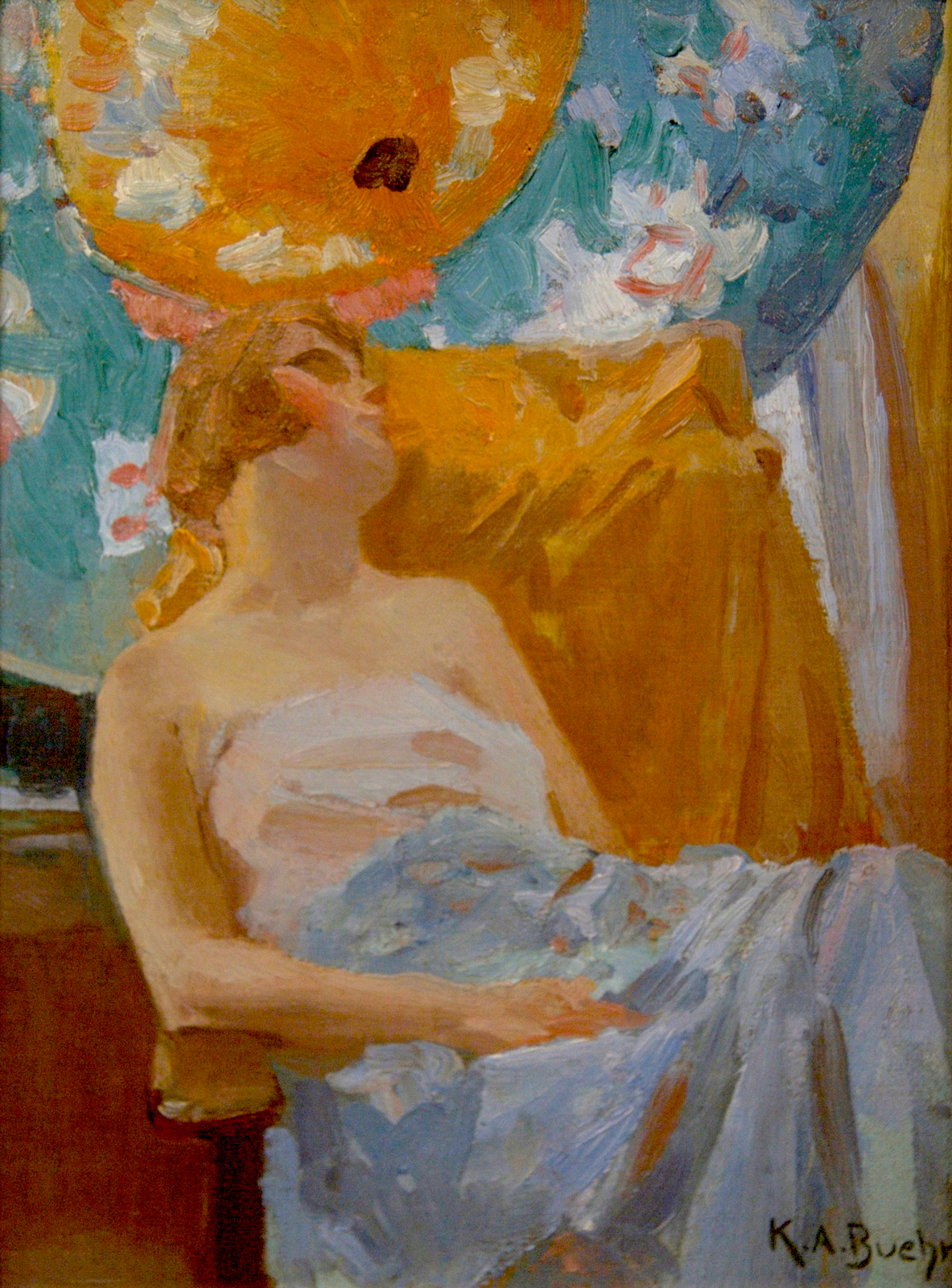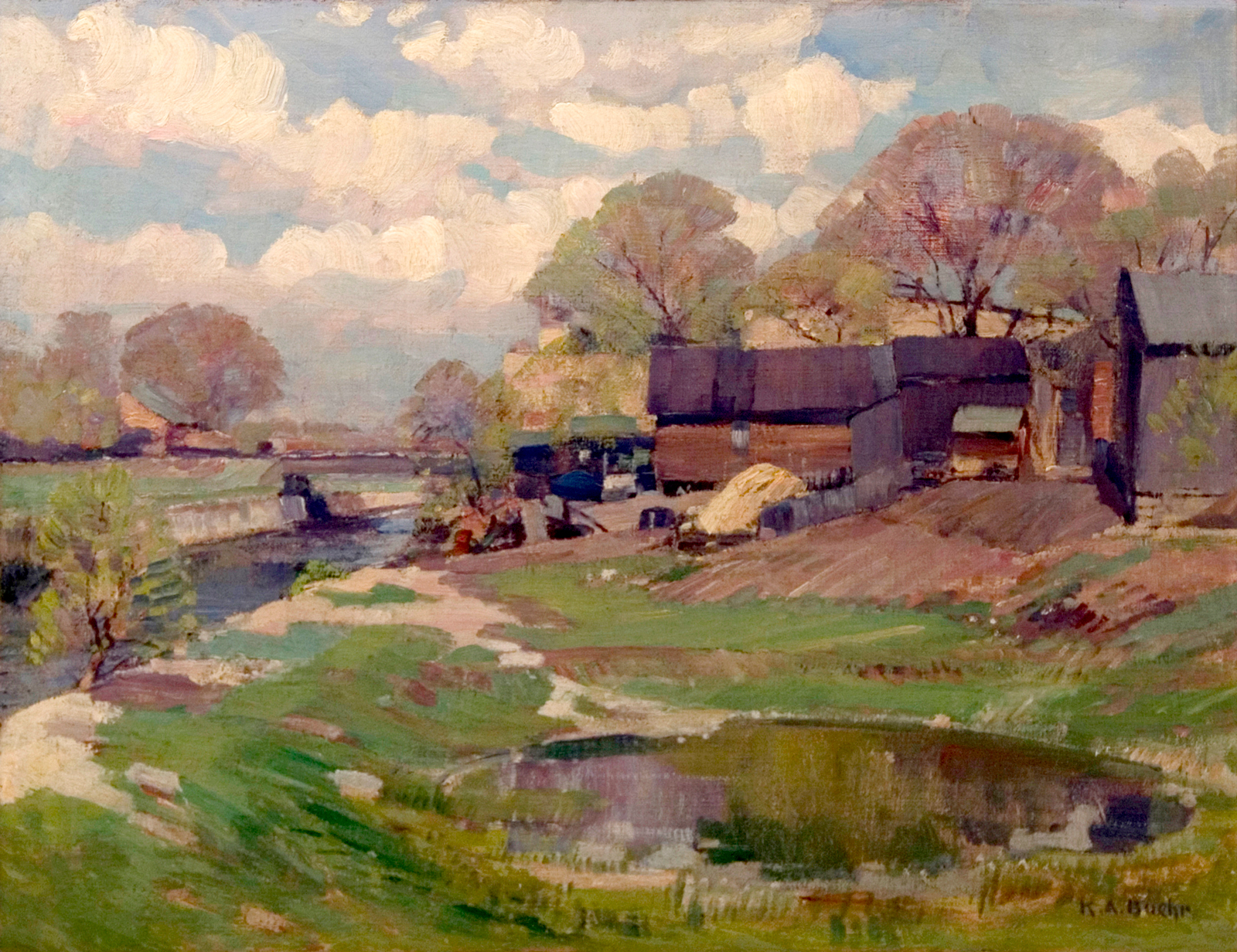Karl A. Buehr
Karl A. Buehr (1866-1952) was an Impressionist painter well-regarded for his colorful, light-filled portraits of women beside verdant gardens. Buehr was born in Germany and moved with his family to Chicago in the early 1880s. He started his artistic training at the School of the Art Institute of Chicago in 1888; after graduating, he became an instructor at the school until 1897. Buehr briefly interrupted his artistic pursuits to fight in the Spanish-American War. He married the painter Mary Hess just after his service had ended.
While he experimented with Impressionist techniques in his early career, Buehr didn’t become a full-fledged Impressionist until he traveled to Paris in 1900 to study at the Académie Julien. For the next fourteen years, up until the outbreak of World War I, Buehr traveled throughout Europe. In 1905, he took up studies in London with Frank Brangwyn; a few years later, in 1909, he joined a colony of American Impressionists living in Giverny, France — including Louis Ritman, Lawton Parker, Friederick Frieseke, and Richard Miller. Buehr returned to Chicago in 1914 to continue teaching at the School of the Art Institute. He taught briefly at both Stanford University and the University of California Berkeley in the late 1920s. Buehr continued painting portraits and landscapes — including of his travels to Vermont, New York, and Taos, New Mexico — for the remainder of his career.

